#Mare Smythii
Text

The Luna 3 spacecraft returned the first views ever of the far side of the Moon. The first image was taken at 03:30 UT on 7 October at a distance of 63,500 km after Luna 3 had passed the Moon and looked back at the sunlit far side. The last image was taken 40 minutes later from 66,700 km. A total of 29 photographs were taken, covering 70% of the far side. The photographs were very noisy and of low resolution, but many features could be recognized. This is the second image returned by Luna 3. Taken by the wide-angle lens, it showed the far side of the Moon was very different from the near side, most noticeably in its lack of lunar maria (the dark areas). The right three-quarters of the disk are the far side. The dark spot at upper right is Mare Moscoviense, the dark area at lower left is Mare Smythii. The small dark circle at lower right with the white dot in the center is the crater Tsiolkovskiy and its central peak. The Moon is 3475 km in diameter and north is up in this image. (Luna 3-2) 1959
4 notes
·
View notes
Photo
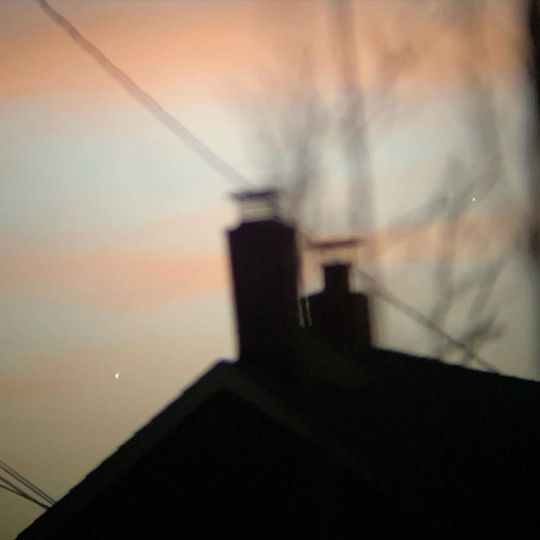
Another telescope evening, plus some on-location with the binox. Got a great shot of Venus and Mercury together after traipsing around a couple blocks trying to find the horizon; that’s what the binoculars are best for, and their tripod is much lighter than the telescope. Plus, at 20x both planets fit in the image (Venus is at lower left). Later, when it got darker, I hit the backyard and got the Moon and Jupiter with the reflector. The new eyepiece protocol is working much better; I also discovered that if I lowered the equatorial axis to 0° then the right ascension and declination axes became default altitude and azimuth axes (last pic). That actually made it so much easier to find things that the wonky finder scope was not as much of a problem. Using the 25mm with the Barlow gave me 72x, which fit the Moon nicely in the eyepiece. Unfortunately, my eyeball could adjust to the shorter focal distance of the Barlow but the camera couldn’t, so the full-disk pic is straight 36x. Weirdly, the detail pics are 180x; the camera had no problem with the 10mm plus Barlow, but that focal distance is much tighter. There’s a good shot of the Theophilus/Cyrillus/Catherina trio, and details of what must be a maximum libration, as Mare Marginis, Smythii, Humboltianum and Australe are all very visible. Then Jupiter! Callisto-Europa-Ganymede-Jupiter-Io tonight, all very close but discernible in the 90x, which is where the telescope really does outperform the binox. I took a shot at 180x just for funsies, but there’s not much else to see in the photo. With my eye I can get hints of cloud bands, but the camera just doesn’t get that subtle. One problem with higher magnifications, the little jiggle when I press the screen to take the picture sometimes has unfortunate results. #iphoneastrophotography #lunarphotography #themoon #20xbinoculars #shallowskyastronomy #newtonianreflector #telescope #114mm #galileanmoons #jupiter #io #europa #ganymede #callisto #lunarlibration #theophiluscyrilluscatharina https://www.instagram.com/p/CmxkWnmriy0/?igshid=NGJjMDIxMWI=
#iphoneastrophotography#lunarphotography#themoon#20xbinoculars#shallowskyastronomy#newtonianreflector#telescope#114mm#galileanmoons#jupiter#io#europa#ganymede#callisto#lunarlibration#theophiluscyrilluscatharina
0 notes
Photo

Another telescope evening, plus some on-location with the binox. Got a great shot of Venus and Mercury together after traipsing around a couple blocks trying to find the horizon; that’s what the binoculars are best for, and their tripod is much lighter than the telescope. Plus, at 20x both planets fit in the image (Venus is at lower left). Later, when it got darker, I hit the backyard and got the Moon and Jupiter with the reflector. The new eyepiece protocol is working much better; I also discovered that if I lowered the equatorial axis to 0° then the right ascension and declination axes became default altitude and azimuth axes (last pic). That actually made it so much easier to find things that the wonky finder scope was not as much of a problem. Using the 25mm with the Barlow gave me 72x, which fit the Moon nicely in the eyepiece. Unfortunately, my eyeball could adjust to the shorter focal distance of the Barlow but the camera couldn’t, so the full-disk pic is straight 36x. Weirdly, the detail pics are 180x; the camera had no problem with the 10mm plus Barlow, but that focal distance is much tighter. There’s a good shot of the Theophilus/Cyrillus/Catherina trio, and details of what must be a maximum libration, as Mare Marginis, Smythii, Humboltianum and Australe are all very visible. Then Jupiter! Callisto-Europa-Ganymede-Jupiter-Io tonight, all very close but discernible in the 90x, which is where the telescope really does outperform the binox. I took a shot at 180x just for funsies, but there’s not much else to see in the photo. With my eye I can get hints of cloud bands, but the camera just doesn’t get that subtle. One problem with higher magnifications, the little jiggle when I press the screen to take the picture sometimes has unfortunate results. #iphoneastrophotography #lunarphotography #themoon #20xbinoculars #shallowskyastronomy #newtonianreflector #telescope #114mm #galileanmoons #jupiter #io #europa #ganymede #callisto #lunarlibration #theophiluscyrilluscatharina https://www.instagram.com/p/CmxkShPMk45/?igshid=NGJjMDIxMWI=
#iphoneastrophotography#lunarphotography#themoon#20xbinoculars#shallowskyastronomy#newtonianreflector#telescope#114mm#galileanmoons#jupiter#io#europa#ganymede#callisto#lunarlibration#theophiluscyrilluscatharina
0 notes
Text

APOD: The Eagle Rises (7/30/22)
Get out your red/blue glasses and check out this stereo view from lunar orbit. The 3D anaglyph was created from two photographs (AS11-44-6633, AS11-44-6634) taken by astronaut Michael Collins during the 1969 Apollo 11 mission. It features the lunar module ascent stage, dubbed The Eagle, rising to meet the command module in lunar orbit on July 21. Aboard the ascent stage are Neil Armstrong and Buzz Aldrin, the first to walk on the Moon. The smooth, dark area on the lunar surface is Mare Smythii located just below the equator on the extreme eastern edge of the Moon's near side. Poised beyond the lunar horizon is our fair planet Earth.
© ALSJ
0 notes
Photo

Apollo 11 lunar module Eagle as it returned from the surface of the Moon to dock with the command module Columbia (1969)
#1969#science#astronomy#Michael Collins#Neil Armstrong#Buzz Aldrin#Apollo 11#Eagle#Columbia#NASA#Mare Smythii#Moon#Earth
10 notes
·
View notes
Photo

Apollo 11: Earth, Moon, Spaceship : After the most famous voyage of modern times, it was time to go home. After proving that humanity has the ability to go beyond the confines of planet Earth, the first humans to walk on another world -- Neil Armstrong and Buzz Aldrin -- flew the ascent stage of their Lunar Module back to meet Michael Collins in the moon-orbiting Command and Service Module. Pictured here on 1969 July 21 and recently digitally restored, the ascending spaceship was captured by Collins making its approach, with the Moon below, and Earth far in the distance. The smooth, dark area on the lunar surface is Mare Smythii located just below the equator on the extreme eastern edge of the Moon's near side. It is said of this iconic image that every person but one was in front of the camera. via NASA
512 notes
·
View notes
Text
Lunar maria (the dark spots on the moon) are named after sea features or states of mind.
Only three maria fail to follow this pattern. Mare Humboldtianum, Mare Smythii, and Mare Moscoviense. The former two were named prior to the International Astronomical Union establishing nomenclature for maria.
The name Mare Moscoviense was proposed by the Soviet Union after Luna 3 sent back the first pictures of it. The IAU only approved the name after being convinced that Moscow was, in fact, a state of mind.
21 notes
·
View notes
Photo
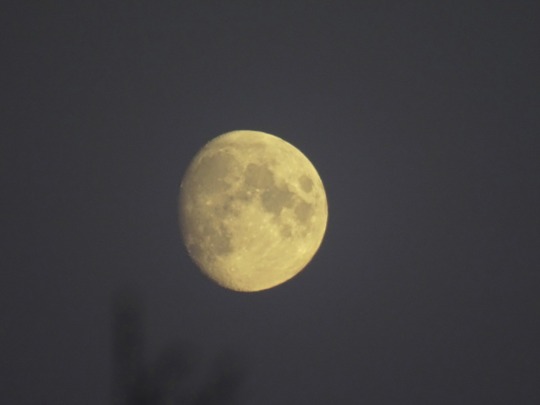
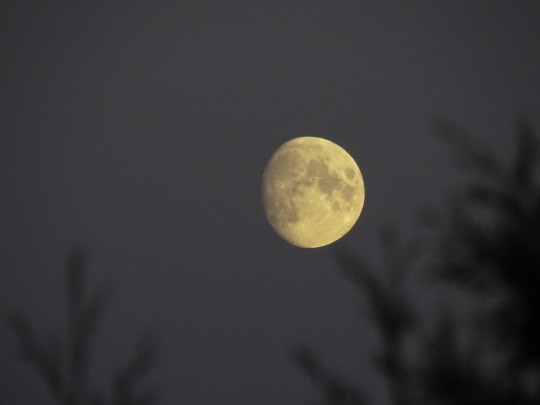

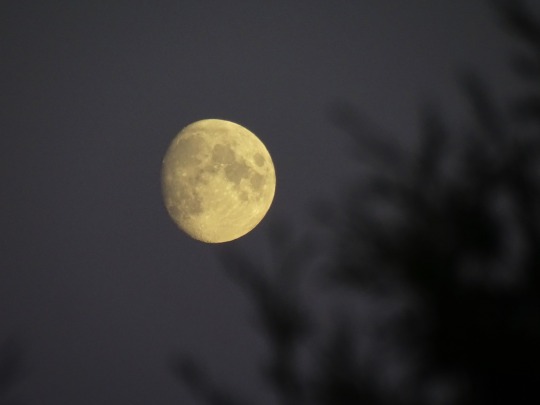

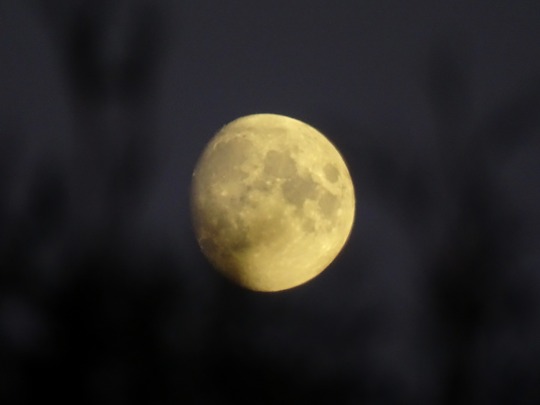



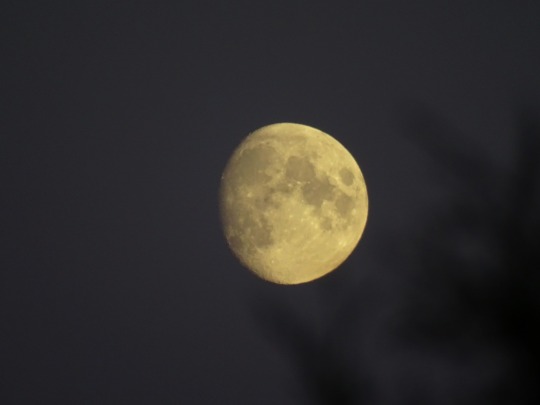
Summer Sky, Tyresö (No. 9)
The topography of the Moon has been measured with laser altimetry and stereo image analysis. Its most extensive topographic feature is the giant far-side South Pole–Aitken basin, some 2,240 km (1,390 mi) in diameter, the largest crater on the Moon and the second-largest confirmed impact crater in the Solar System. At 13 km (8.1 mi) deep, its floor is the lowest point on the surface of the Moon. The highest elevations of the Moon's surface are located directly to the northeast, which might have been thickened by the oblique formation impact of the South Pole–Aitken basin. Other large impact basins such as Imbrium, Serenitatis, Crisium, Smythii, and Orientale possess regionally low elevations and elevated rims. The far side of the lunar surface is on average about 1.9 km (1.2 mi) higher than that of the near side.
The discovery of fault scarp cliffs suggest that the Moon has shrunk by about 90 metres (300 ft) within the past billion years. Similar shrinkage features exist on Mercury. Mare Frigoris, a basin near the north pole long assumed to be geologically dead, has cracked and shifted. Since the Moon doesn't have tectonic plates, its tectonic activity is slow and cracks develop as it loses heat.
Source: Wikipedia
#Tyresö#Stockholm County#blue hour#dusk#silhouette#moon#nature#flora#bush#tree#fir#pine#original photography#astronomy#Sweden#astronomical photography#close up#moon rise#natural satellite#Sverige#Scandinavia#evening sky#evening light#tourism#summer 2020#sky
2 notes
·
View notes
Photo

Apollo 11 Mission Image - View of moon limb with Earth on the horizon, Mare Smythii Region by NASA on The Commons
333 notes
·
View notes
Photo

1963- The Luna 3 spacecraft returned the first views ever of the far side of the Moon. The first image was taken at 03:30 UT on 7 October at a distance of 63,500 km after Luna 3 had passed the Moon and looked back at the sunlit far side. The last image was taken 40 minutes later from 66,700 km. A total of 29 photographs were taken, covering 70% of the far side. The photographs were very noisy and of low resolution, but many features could be recognized. This is the first image returned by Luna 3. Taken by the wide-angle lens, it showed the far side of the Moon was very different from the near side, most noticeably in its lack of lunar maria (the dark areas). The right three-quarters of the disk are the far side. The dark spot at upper right is Mare Moscoviense, the dark area at lower left is Mare Smythii. The small dark circle at lower right with the white dot in the center is the crater Tsiolkovskiy and its central peak. The Moon is 3475 km in diameter and north is up in this image
8 notes
·
View notes
Photo

2021 May 3
Apollo 11: Earth, Moon, Spaceship
Image Credit: NASA, Apollo 11; Restoration - Toby Ord
Explanation: After the most famous voyage of modern times, it was time to go home. After proving that humanity has the ability to go beyond the confines of planet Earth, the first humans to walk on another world -- Neil Armstrong and Buzz Aldrin -- flew the ascent stage of their Lunar Module back to meet Michael Collins in the moon-orbiting Command and Service Module. Pictured here on 1969 July 21 and recently digitally restored, the ascending spaceship was captured by Collins making its approach, with the Moon below, and Earth far in the distance. The smooth, dark area on the lunar surface is Mare Smythii located just below the equator on the extreme eastern edge of the Moon's near side. It is said of this iconic image that every person but one was in front of the camera.
∞ Source: apod.nasa.gov/apod/ap210503.html
59 notes
·
View notes
Photo
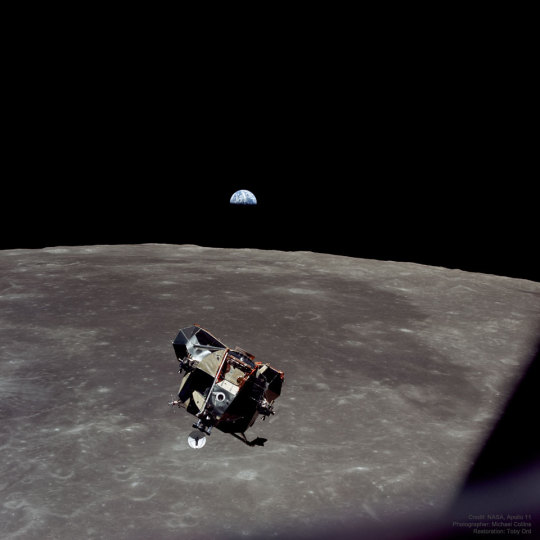
Apollo 11: Earth, Moon, Spaceship via NASA https://ift.tt/2RnvuEv
After the most famous voyage of modern times, it was time to go home. After proving that humanity has the ability to go beyond the confines of planet Earth, the first humans to walk on another world -- Neil Armstrong and Buzz Aldrin -- flew the ascent stage of their Lunar Module back to meet Michael Collins in the moon-orbiting Command and Service Module. Pictured here on 1969 July 21 and recently digitally restored, the ascending spaceship was captured by Collins making its approach, with the Moon below, and Earth far in the distance. The smooth, dark area on the lunar surface is Mare Smythii located just below the equator on the extreme eastern edge of the Moon's near side. It is said of this iconic image that every person but one was in front of the camera.
(Published May 03, 2021)
5 notes
·
View notes
Photo

Almost full Moon this evening, and we're really at the southeastern edge of lunar libration -- Tycho is pretty close to the southern edge, Mare Frigoris is pretty far from the northern, you can catch Mare Marginis and Mare Smythii at the western, and Grimaldi is only just visible on the terminator line in the east. That's a pretty good picture of Saturn, as far as this astrophotography kludge goes. 🪐📲👍 And lookie lookie win a cookie, there's Jupiter! Io is in eclipse right now, so what you see is Europa-Jupiter-Ganymede-Callisto... except Europa looks kinda like a lens artifact from Jupiter's glare, although that's where is supposed to be. You make the call -- Moon or mirage? Nice to have a couple of planets back in the evening sky. 😁 #iphoneastrophotography #lunarphotography #themoon #20xbinoculars #shallowskyastronomy #galileanmoons #jupiter #io #europa #ganymede #callisto #saturn #extremelibration #almostfullmoon #waxinggibbous https://www.instagram.com/p/CiROB-_Onzm/?igshid=NGJjMDIxMWI=
#iphoneastrophotography#lunarphotography#themoon#20xbinoculars#shallowskyastronomy#galileanmoons#jupiter#io#europa#ganymede#callisto#saturn#extremelibration#almostfullmoon#waxinggibbous
1 note
·
View note
Photo

Almost full Moon this evening, and we're really at the southeastern edge of lunar libration -- Tycho is pretty close to the southern edge, Mare Frigoris is pretty far from the northern, you can catch Mare Marginis and Mare Smythii at the western, and Grimaldi is only just visible on the terminator line in the east. That's a pretty good picture of Saturn, as far as this astrophotography kludge goes. 🪐📲👍 And lookie lookie win a cookie, there's Jupiter! Io is in eclipse right now, so what you see is Europa-Jupiter-Ganymede-Callisto... except Europa looks kinda like a lens artifact from Jupiter's glare, although that's where is supposed to be. You make the call -- Moon or mirage? Nice to have a couple of planets back in the evening sky. 😁 #iphoneastrophotography #lunarphotography #themoon #20xbinoculars #shallowskyastronomy #galileanmoons #jupiter #io #europa #ganymede #callisto #saturn #extremelibration #almostfullmoon #waxinggibbous https://www.instagram.com/p/CiRNtuUMiej/?igshid=NGJjMDIxMWI=
#iphoneastrophotography#lunarphotography#themoon#20xbinoculars#shallowskyastronomy#galileanmoons#jupiter#io#europa#ganymede#callisto#saturn#extremelibration#almostfullmoon#waxinggibbous
1 note
·
View note
Photo
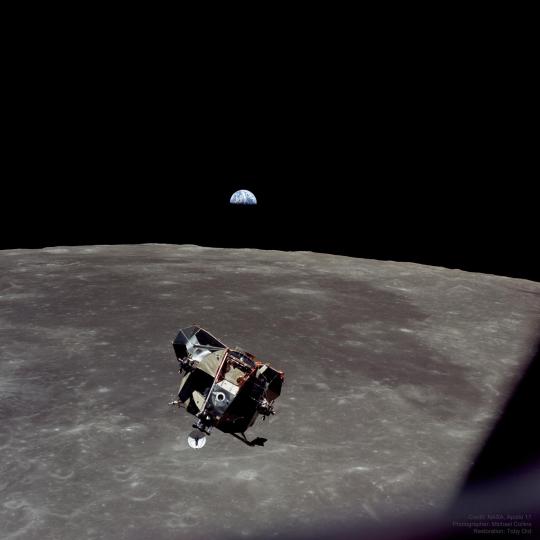
Apollo 11: Dünya, Ay, Uzay Gemisi
Günün Astronomi Görseli 3 Mayıs 2021
Görsel: NASA, Apollo 11; Restorasyon- Toby Ord
Modern zamanların en ünlü yolculuğundan sonra, eve dönüş zamanı gelmişti. İnsanlığın Dünya gezegeninin sınırları dışına gidebileceğini kanıtladıktan sonra, başka bir dünyada yürüyen ilk insanlar, Neil Armstrong ve Buzz Aldrin, Ay’ın yörüngesinde dönen Komuta ve Servis Modülü’ndeki Michael Collins’le tekrar buluşmak için Ay Modülü’nün yükselme aşamasını uçurdular. Burada, 21 Temmuz 1969’da alınan ve yakın zamanda dijital olarak düzeltilen görüntüde, Collins tarafından yakalanan ve yaklaşan, yükselmekte olan uzay gemisi, altta Ay ve uzakta Dünya var. Ay yüzeyindeki düz, karanlık bölge, Ay’ın yakın yüzünün en doğu sınırında ekvatorun hemen altında yer alan Mare Smythii. Denir ki bu sembolik görüntüde yalnızca bir kişi dışında bütün insanlar bulunmaktadır.
Görsel: NASA, Apollo 11; Restorasyon- Toby Ord
Yazarlar & Editörler: Robert Nemiroff (MTU) & Jerry Bonnell (UMCP)
NASA yetkilisi: Phillip Newman Özel haklara tabidir.
NASA Web Gizlilik Politikası ve Önemli Bildirimler
Bir ASD at NASA / GSFC
& Michigan Tech. U. hizmetidir.
Apollo 11: Dünya, Ay, Uzay Gemisi yazısı ilk olarak Uzaydan Haberler sayfasında göründü.
3 notes
·
View notes
Photo

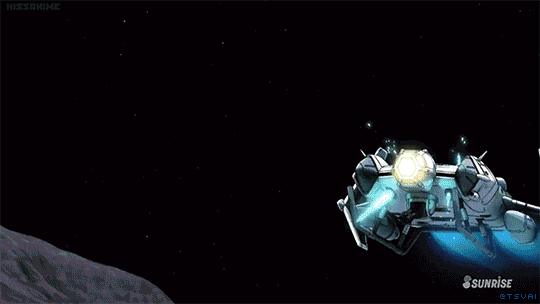

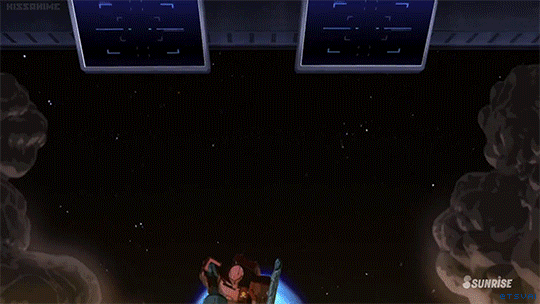


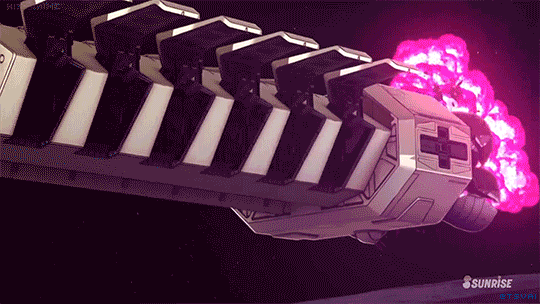

Char Aznable
The Battle of Mare Smythii
Mobile Suit Gundam: The Origin - Eve of Destiny
#mobile suit gundam#char aznable#finally got around to doing this#i have yet to come across any gifs from mare smythii#so i elected to do it myself hHHhhHhg#i don't have a lot of experience with it so sorry if they're terrible lmao#like tumblr compression added on some extra mauling but i spent so much time on them i feel like i have to commit to them#gifmaking for tumblr size requriements is suffering#audrey's art
5 notes
·
View notes